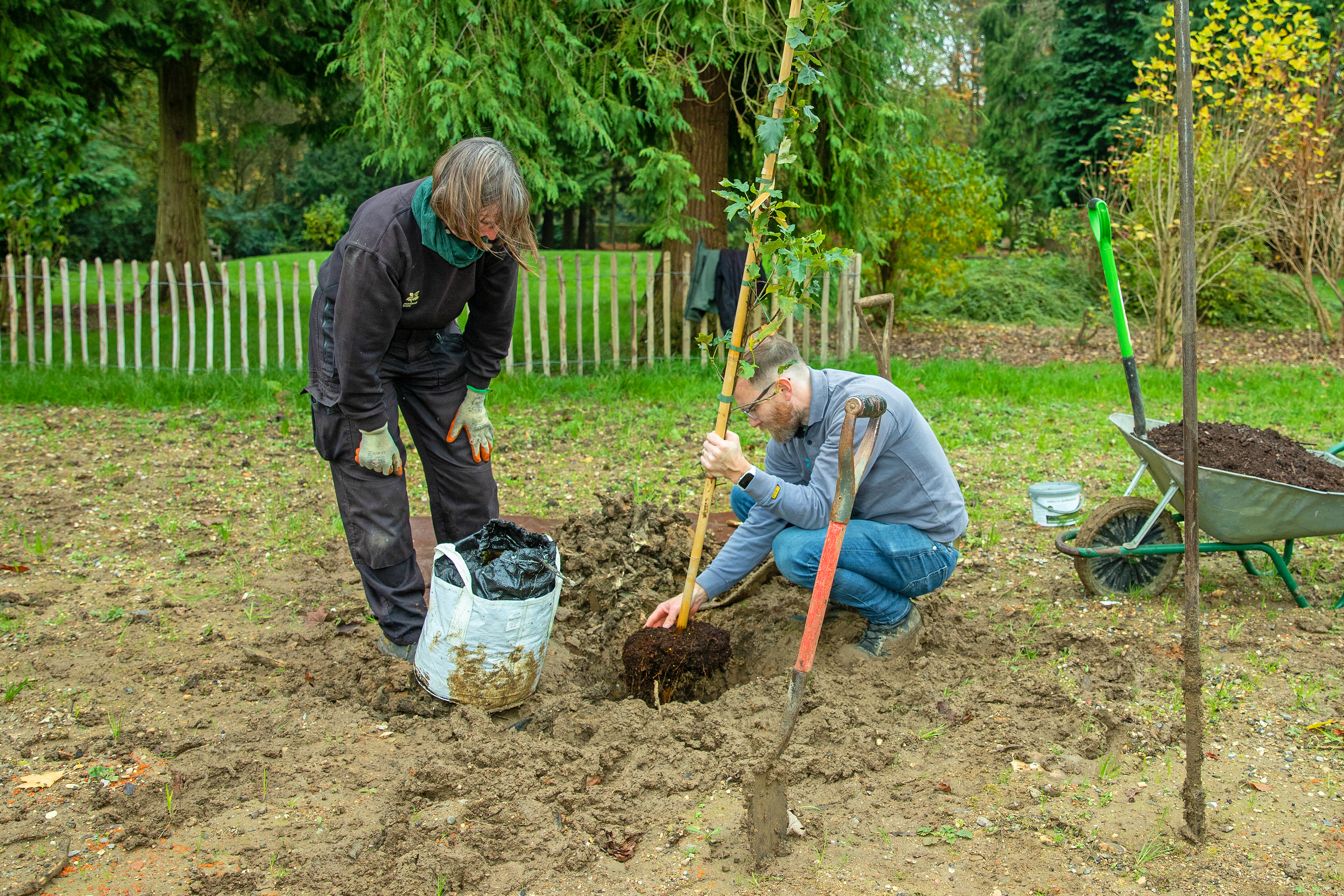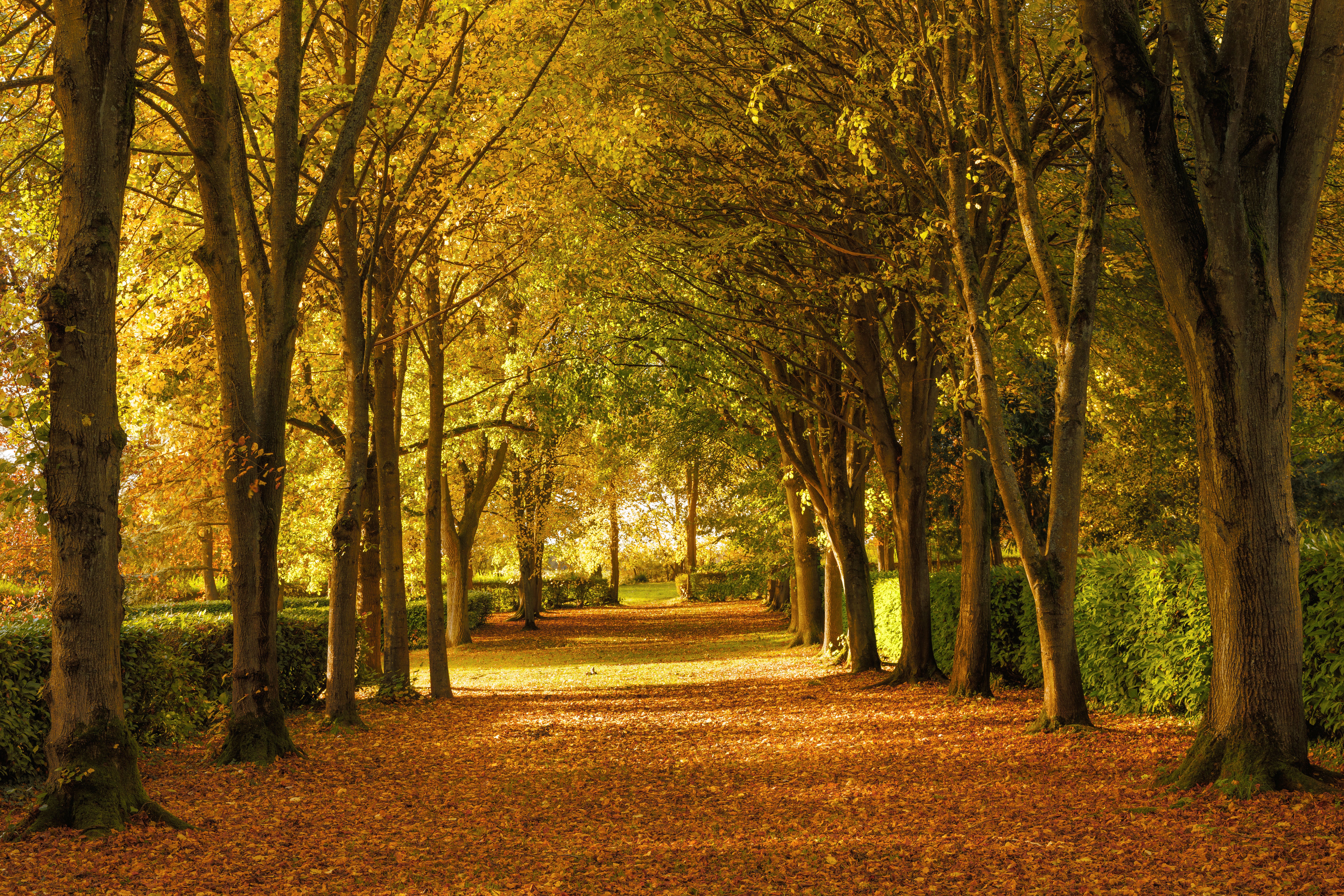Reviving Nature’s Cathedral: The Restoration of Whipsnade Tree Cathedral
Nestled in the heart of Bedfordshire lies the Whipsnade Tree Cathedral, a stunning natural monument that has served as a living memorial since the aftermath of World War I. Originally planted as a tribute to those who lost their lives, this unique cathedral shaped entirely by trees suffered a severe blow recently due to the invasive ash dieback disease.
The National Trust has announced restoration efforts aimed at reviving this iconic structure, which not only honors history but also embodies a deep connection to nature. The cathedral, designed by Edmund Blyth in the 1920s, is a brilliant tribute comprising various species of trees, shrubs, and plants that form its nave, chancel, and even cloisters. Sadly, the ash trees, which were added in 1938, succumbed to ash dieback, requiring their removal earlier this year.
 Bringing new life to the cathedral with the planting of wild service trees.
Bringing new life to the cathedral with the planting of wild service trees.
A New Chapter for the Cathedral
In a bid to restore the former glory of the tree cathedral, the National Trust has taken proactive measures to plant wild service trees in place of the ash trees. As Paul Druce-Collins, the lead ranger for the National Trust at Dunstable Downs, eloquently stated, “The tree cathedral is an exceptional place, connecting people to nature and history.” This connection is vital as we seek to celebrate our environment amidst the challenges posed by disease and climate change.
The introduction of wild service trees is a promising move. This native species is believed to be much more resilient to diseases, offering not just a restoration of form, but an enhancement of the existing ecosystem. Wild service trees are known for their beautiful blossoms in the spring and stunning autumn foliage. They will maintain the structural integrity of the cathedral while enriching the biodiversity of the area, attracting pollinators and providing essential habitats.
Climate Change: A Persistent Threat
This situation isn’t unique; many trees across the UK are facing similar risks attributed to the effects of climate change. As our climate continues to shift, the habitats that once supported native species are now becoming unfavorable. Many foresters and environmentalists are urging rapid action to preserve our green spaces as temperatures and rainfall patterns evolve.
We must ask ourselves, how many more historically significant spaces are at risk? The Whipsnade Tree Cathedral stands as an important reminder of our past, but it also highlights our responsibility to care for the environment shaping our collective future. We cannot merely celebrate nature; we must actively engage in its preservation.
Community Connections Through Nature
As someone who has spent countless afternoons wandering through tree-lined paths and reflecting amidst the natural world, I believe places like the Whipsnade Tree Cathedral provide invaluable community spaces that foster a greater appreciation for nature. These areas allow us to connect deeply with history while providing a sanctuary for local wildlife.
The restoration effort also beckons participation from the local community. By offering opportunities to volunteer and engage with educational programs about the importance of biodiversity and climate resilience, we can inspire a new generation to care for these precious spaces. It’s in our collective hands to ensure that the legacy of Whipsnade, and others like it, endures for many years to come.
 The vibrant autumn hues showcase the beauty of biodiversity.
The vibrant autumn hues showcase the beauty of biodiversity.
Conclusion
In conclusion, the revival of the Whipsnade Tree Cathedral is not simply about replacing lost trees but is a profound act of resilience against the deleterious effects of ash dieback and climate change. This restoration sends a clear message: through thoughtful action and community involvement, we can heal our landscapes and celebrate the intertwined destinies of people and nature. I personally urge everyone to visit, volunteer, and advocate for sustainable practices that ensure our natural memories are preserved for future generations. Only then can we truly honor those we remember and the earth we inhabit.
Together, let’s champion the fight for nature, ensuring cherished spaces like the Whipsnade Tree Cathedral thrive long into the future.











